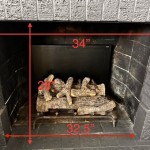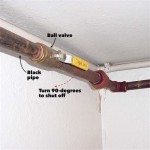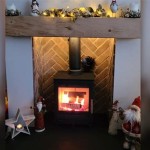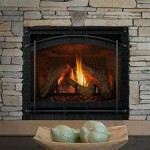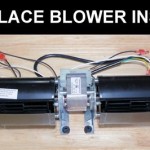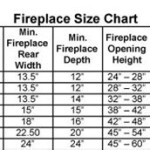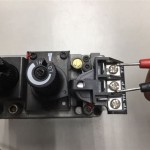Kettle For Fireplace: A Detailed Examination
A kettle for fireplace use represents a specialized type of kettle designed to be heated directly by the open flames and radiant heat of a fireplace. These kettles have a long history, dating back to times when fireplaces were the primary source of heat and hot water in homes. While modern heating systems have largely supplanted the need for fireplace kettles as a daily necessity, they continue to hold a place as functional decor, emergency water heating devices, and charming historical accents.
The fundamental purpose of a kettle designed for fireplace use remains the same as any other kettle: to heat water to a boiling point. However, the design and materials of fireplace kettles must be robust to withstand the harsh conditions of direct exposure to flames and high temperatures. Considerations for material durability, heat distribution, and safety are paramount in their construction.
Traditionally, fireplace kettles were crafted from cast iron. The inherent properties of cast iron, including its ability to withstand high temperatures, distribute heat evenly, and retain heat for extended periods, made it an ideal material for this application. Furthermore, cast iron offered a level of durability necessary to withstand the rigors of regular use within a fireplace environment. However, modern fireplace kettles may also utilize other materials with specific heat-resistant properties, such as stainless steel or enamel-coated metals, often in conjunction with cast iron elements.
Material Selection and Heat Resistance
The choice of material is a critical factor in the longevity and performance of a kettle intended for fireplace use. Cast iron, noted for its high heat retention, is a common choice. This property allows the kettle to maintain water temperature for an extended duration after it has been removed from the fire. The density of cast iron also contributes to its ability to withstand the stresses of repeated heating and cooling cycles. However, cast iron is susceptible to rust if not properly seasoned and maintained. Therefore, many cast iron fireplace kettles are pre-seasoned or coated with enamel to provide protection against corrosion.
Stainless steel is another viable material selection, known for its resistance to corrosion and ease of cleaning. Stainless steel kettles designed for fireplace use typically feature a heavier gauge to withstand the high temperatures and prevent warping. While stainless steel does not retain heat as effectively as cast iron, it offers a significant advantage in terms of maintenance and resistance to rust. Some kettles might combine both, using cast iron for the base to maximize heat absorption and retention, and stainless steel for the body to reduce weight and improve corrosion resistance.
Enamel coatings can be applied to both cast iron and steel kettles to provide an additional layer of protection against rust and corrosion. Enamel coatings also offer aesthetic benefits, allowing for a wider range of colors and finishes. However, it is crucial that the enamel coating is specifically designed for high-temperature applications, as standard enamel may chip or crack under the extreme heat of a fireplace. The durability of the enamel also depends on the quality of application and the type of enamel used.
Design Considerations for Fireplace Use
Beyond the materials used, the design of a fireplace kettle is crucial for its functionality and safety. A stable base is essential to prevent the kettle from tipping over, especially when filled with water. Many fireplace kettles feature a wide, flat base made of cast iron to provide stability and efficient heat transfer from the coals or grate.
The handle of a fireplace kettle must be designed to remain relatively cool to the touch, even when the kettle is exposed to high heat. This is typically achieved through the use of heat-resistant materials, such as wood or insulated metal, and by designing the handle to be positioned as far away from the heat source as possible. In some designs, the handle may be connected to the kettle body via a series of heat-dissipating links or coils to reduce heat transfer. Regularly checking for any wear or loosening of the handles is also important for safety.
The spout of the kettle should be designed to allow for controlled pouring without spilling or splashing hot water. A gooseneck spout, which features a curved shape, is often preferred for its precision and control. The angle and length of the spout are carefully considered to minimize the risk of burns and ensure a smooth, consistent stream of water. The presence of a lid is also important to prevent debris from entering the water and to help retain heat. The lid should fit securely but also be easy to remove for refilling and cleaning.
Some fireplace kettles also incorporate features that enhance their usability and aesthetics. These may include built-in thermometers to monitor water temperature, decorative embellishments that reflect the style of the fireplace, or whistles that indicate when the water has reached boiling point. The inclusion of such features depends on the intended use of the kettle, whether it is primarily for functional purposes or as a decorative element.
Safety Precautions when Using a Fireplace Kettle
Using a kettle in a fireplace necessitates a number of safety precautions. One of the most important is to ensure that the kettle is placed on a stable and level surface within the fireplace. An unsteady kettle presents a significant risk of tipping over and spilling hot water, potentially causing severe burns. The base of the fireplace offers a solid surface, but it is crucial to ensure the kettle is balanced before lighting the fire.
Protective gloves should always be worn when handling a hot kettle. Even with a heat-resistant handle, the body of the kettle can become extremely hot, and touching it with bare hands can result in burns. Heat-resistant gloves provide a barrier against the heat and protect the hands from burns. Tongs or other lifting devices can also be employed to further minimize the risk of direct contact with the hot kettle.
When pouring hot water from the kettle, it is essential to exercise caution to avoid scalding. Pouring slowly and steadily, directing the steam away from the face and body, and being mindful of the surroundings can help prevent accidents. It is advisable to have a designated area for pouring the hot water, away from foot traffic and flammable materials. Children and pets should be kept at a safe distance from the fireplace and the hot kettle at all times.
Regular maintenance of the fireplace kettle is also crucial for safety. Inspecting the kettle for any signs of damage, such as cracks, leaks, or loose handles, can help prevent accidents. Cleaning the kettle regularly to remove soot and debris can also improve its efficiency and prevent the buildup of harmful substances. If any damage is detected, the kettle should be repaired or replaced before further use.
Furthermore, always ensure adequate ventilation when using a fireplace. A properly functioning chimney is essential to vent smoke and fumes safely out of the house. Carbon monoxide detectors should be installed and maintained to alert residents to the presence of this odorless and deadly gas. If any signs of carbon monoxide poisoning are detected, such as headache, dizziness, or nausea, the fireplace should be extinguished immediately and medical attention sought.
In summary, a kettle for fireplace requires mindful usage and proper safety protocol, ensuring that it serves its intended function without presenting a hazard. Prioritizing design features that promote stability, heat resistance, and safe handling are crucial, along with vigilant monitoring for any signs of wear or malfunction.

Wood Stove Kettle Steamer The Blog At Fireplacemall

Style Selections Fireplace Kettle Humidifier 10 In Cast Iron Black Matte 15321 Réno Dépôt

Minuteman Humidifying Kettles Us Fireplace

Stove Top Kettle Duck Egg Blue Victorian Terrace

Antique Cast Iron Pot Water Kettle Kitchen Fireplace Hearth

Royalty Free Photo Two Gray Kettles On Brown Fireplace Pickpik

Choosing A Fireplace Question Of Aesthetics Vs Efficiency

High Quality Wall Hanging Fireplace Manufacturers And Suppliers China Brands Hi Flame Metal

Steamers Kettles Main Street Fireplace Fall
Related Posts

